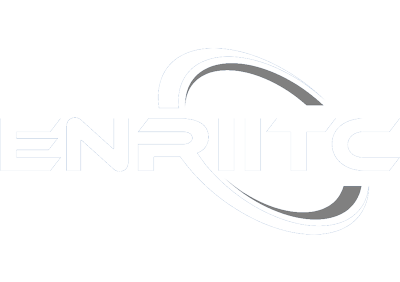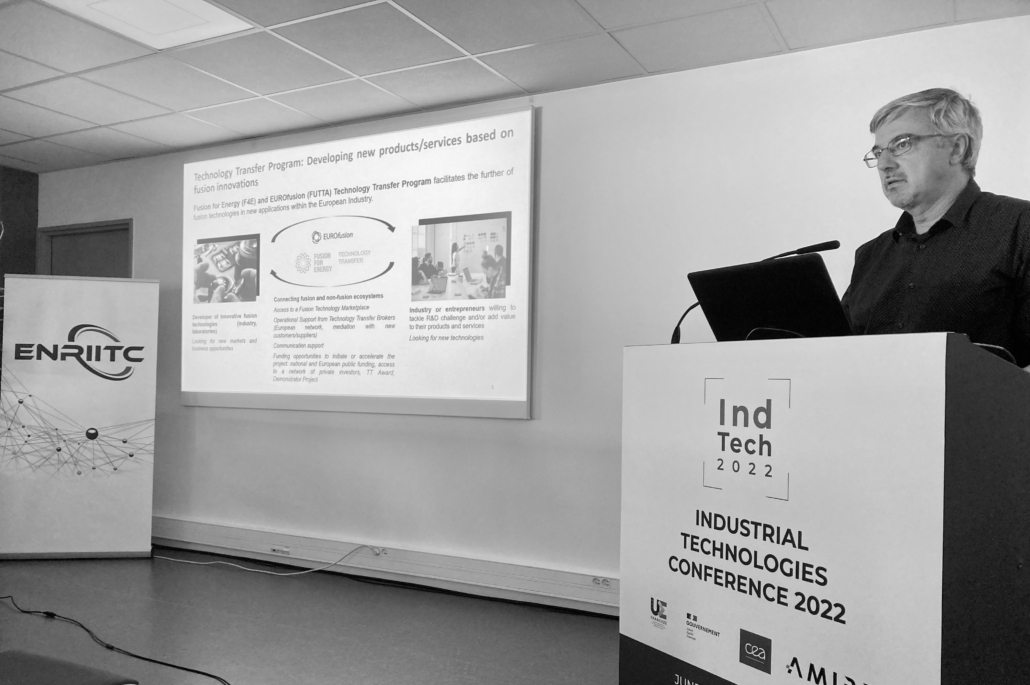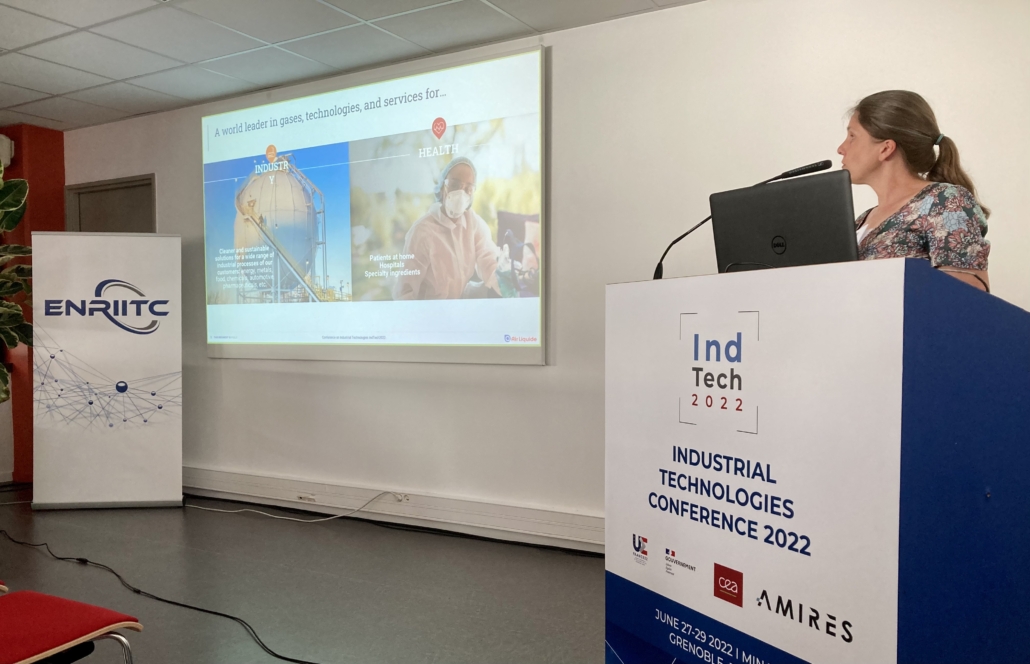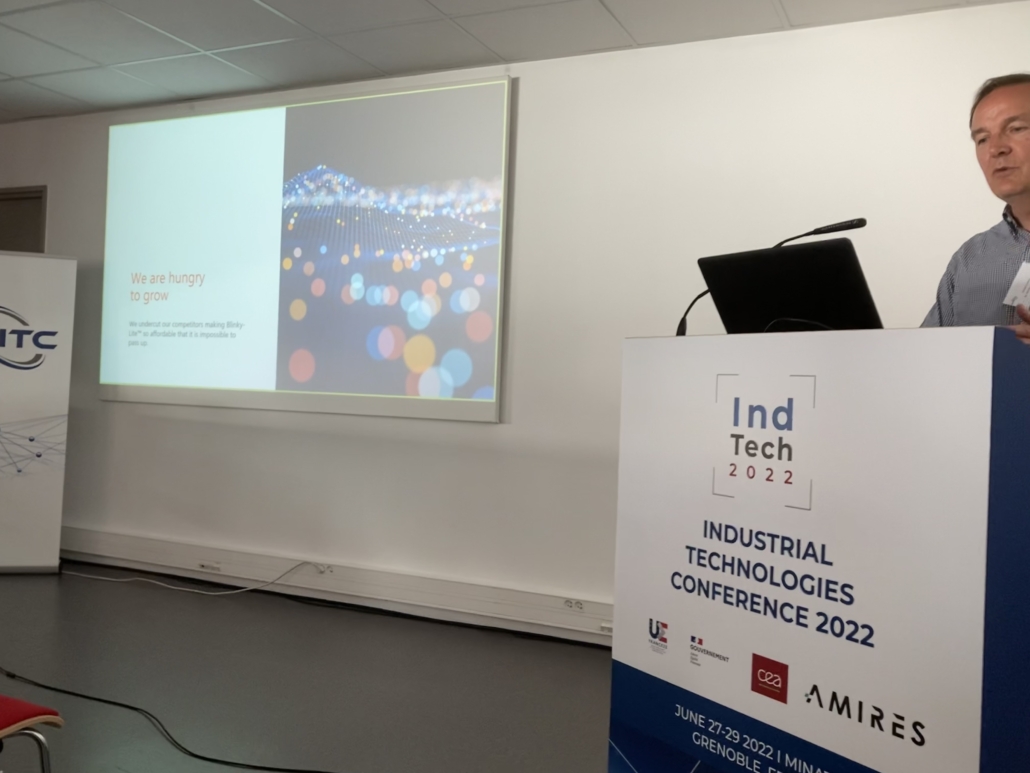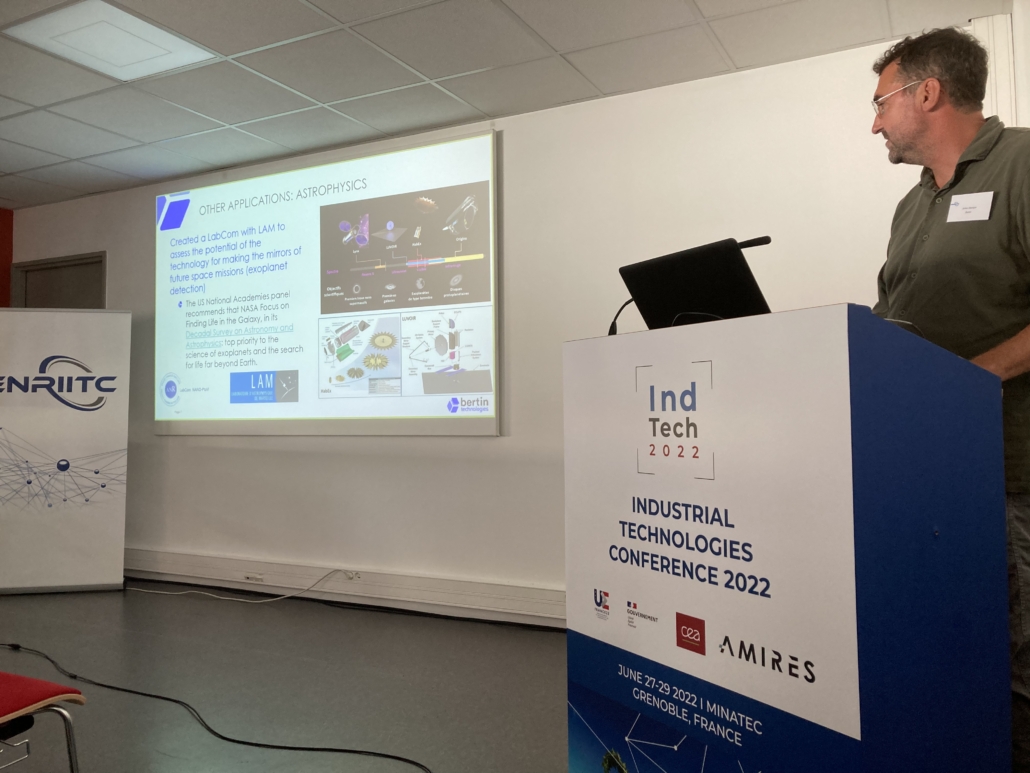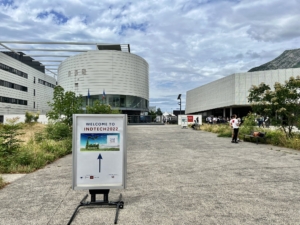 IndTech 2022 took place from 27 to 29 June 2022 in Grenoble, France.
IndTech 2022 took place from 27 to 29 June 2022 in Grenoble, France.
The conference, which was organised under the auspices of the French presidency of the European Union and with the support of the European Commission, aimed to provide a forum for exchange between industry, research and policy makers in order to forge a common vision for Europe moving forward in the context of transitional challenges.
Of course, this event couldn’t have been a better opportunity for ENRIITC!
During the afternoon of 27 June at the Maison Minatec, in association with IndTech, we brought together RI representatives, industry and stakeholders from the innovation ecosystem to exchange on the topic of basic and how big science can be a seed for future needs.
The workshop was organised as a hybrid event in order to welcome both on-site participants and those joining remotely. It was split in two different sessions: the first one dedicated to the individual presentations of industrial case studies, while the second one was structured in a round table mode with an active interaction between the panellists, the moderators and the audience.
SESSION 1 – Industrial case studies & speakers’ presentation
- Marie Portier, Innovation Business Unit Manager, Air Liquide (Presentation_1);
- Andrew Goetz, Tango, ESRF (Presentation_2);
- Daniel Everett, Co-Founder & CSO, BL Monitor & Control -SE (Presentation_3);
- Julien Marque, Project leader, Bertin (Presentation_4);
- Ulli Koestler, Institut Laue-Langevin -ILL (Presentation_5);
Once all the speakers concluded their presentations, the second session started with an interactive exchange based on the main issues currently being discussed at an EU level, such as making the transition from Big Science to industry faster and easier. After the introductory speech was made by Arnauld Leservot, a few inputs were given to kick off the round table discussion:
1. Which is the way to pass from the great science and high-tech ideas creation to their deployment in the industry?
2. How can we foster the process?
3. And what does Basic and Big Science Innovation studio mean?
These are the main reasons why ENRIITC, in collaboration with IndTech, organised this workshop from frontier science to frontier industry. Anne-Charlotte Joubert invited all the panellists to introduce themselves and to express their point of view, focusing on what they believe are the real gaps that need to be addressed and what could or should be done to improve the current situation.
SESSION 2 (Round table) – Big Science Innovation Studio, supporting the acceleration of basic and Big Science to application
- Arnauld Leservot, introduction to the Big Science Innovation Studio concept;
- Celine Clausener, Linkinnov General Director;
- Edward Mitchell, Head of Business Development Office, ESRF;
- Pierre Kern, CNRS INSU;
- Philippe Caillol, head of Y Spot Innovation Studio, CEA – Technology Research.
DISCOVERED AND INVENTED HERE, EXPLOITED ELSEWHERE.
Here below, you can find the main thoughts from our panellists, who reacted to the input provided by stating their opinions, not only on “How basic and big science may be a seed for future needs,” but also on what the current obstacles are in the EU Big Science field and what changes that need to be implemented.
Celine from Linkinnov: “Thanks to all the speakers for the great presentations. All the case studies can create strong synergies and that’s why we need to exit the comfort zone. The way to succeed and to pass from Frontier Science to Frontier Industry, is to keep on creating more of these synergies at the European level and not let them isolated, there is so much that can be raised from there.”
Edward Mitchell from ESRF: “In my opinion, the real problems today refer to the EU missing mindset. I could create 3 different start-ups tomorrow, but the mindset isn’t there: no motivation, no ambition. The culture in the lab is not to encourage, and people don’t want to go and try. But you know what? It’s ok to fail; you are going to learn a lot by failing. But it’s also ok to go and succeed and be a multibillionaire! But if you don’t have the fire, nothing will change. The key is to turn risk and challenges into opportunities for the future.”
Pierre from CNRS INSU: “How can we go from Innovation in lab to innovation in industry, but vice versa? I believe that in Europe, it is also difficult to invert the process, which means to take the innovation raising in the industry and bring it to the laboratories. An additional reflection I have, it refers to how we set the entire process in Europe; we can be very good in building secure programs and, normally, our challenge is to have outcomes/results from the instruments at the very end. Which means that, if we compare with our American colleagues, we are definitely not cowboys. They are actually able to take a technology and go straight forward to the application [in order to] to test it and act accordingly.”
Philippe from CEA – Y Spot Innovation Studio: “But when it comes to new technologies developed, what is the real problem today? It might be a lack of ideas, because once the technologies are ready, we were not able to clarify what we could really do with them. It can also be a mindset issue, which means that Europe might not be fully ready to create a proper business around the “from science to industry” process. It’s clear that an action plan is needed for this, even if it won’t be easy to put in place. Maybe the innovation studio is the way to move forward?”
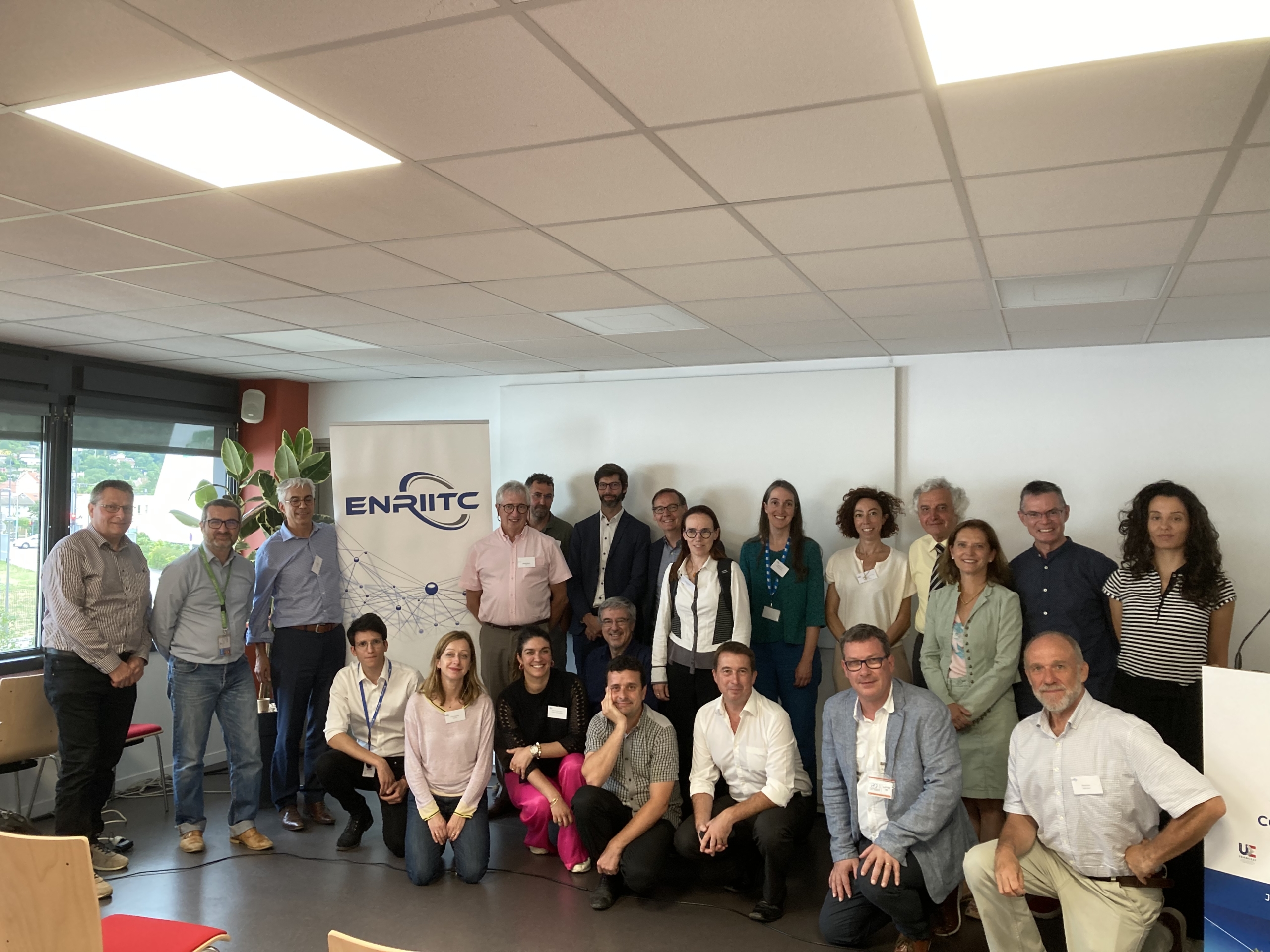
From what emerged from the session, all were in agreeance that there is so much potential in the EU for passing from invention to real application and valorisation of what has been done and what will be done, but the strategy to do so is lacking.
How can Europe be such a great ground for studying, inventing, discovering and progressing, but at the same time, be limited for spreading, valorising and moving forward? What’s the action plan to achieve a mutual and stronger collaboration between Science and Industry? Is there a strategy that aims to change the current situation in order to highlight the existing potential out there?
The Big Science innovation studio concept might just be the answer. The changes won’t be easy or immediate, but they are needed. The first step should be the real intention of “exiting the comfort zone” and moving forward. As the old saying goes, “if you never try, you’ll never know.”
